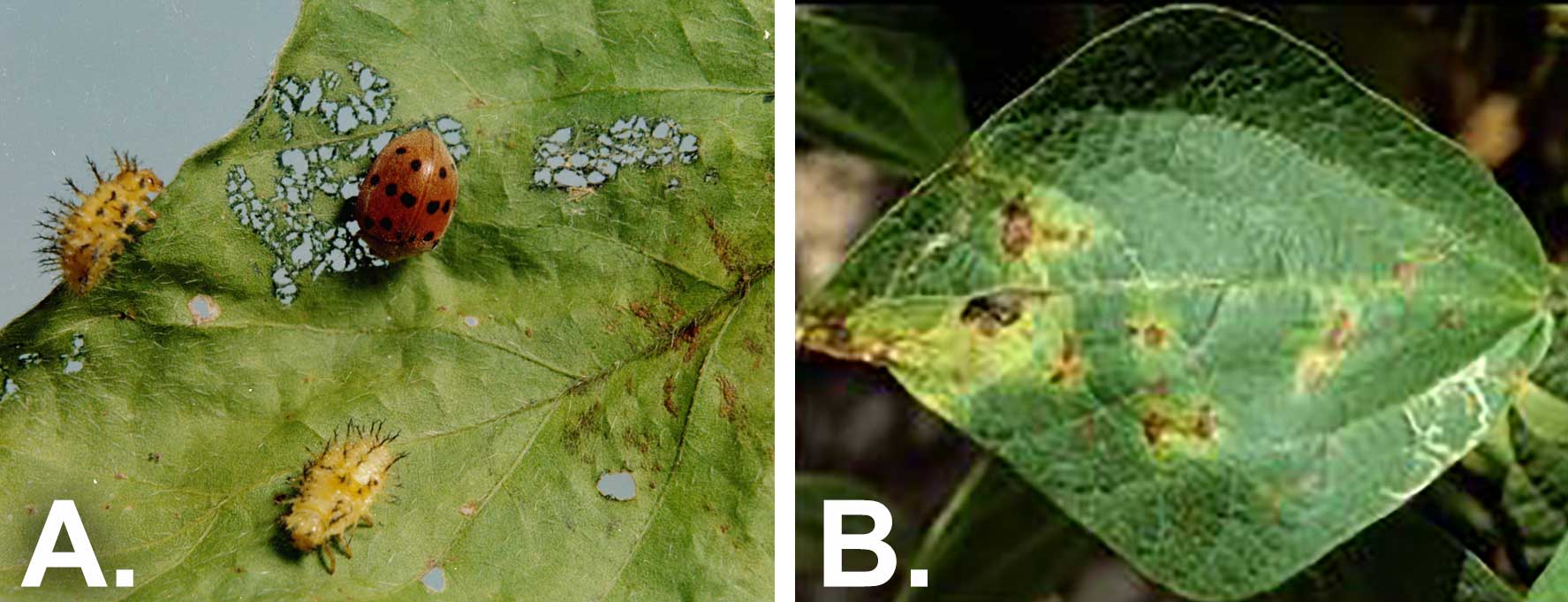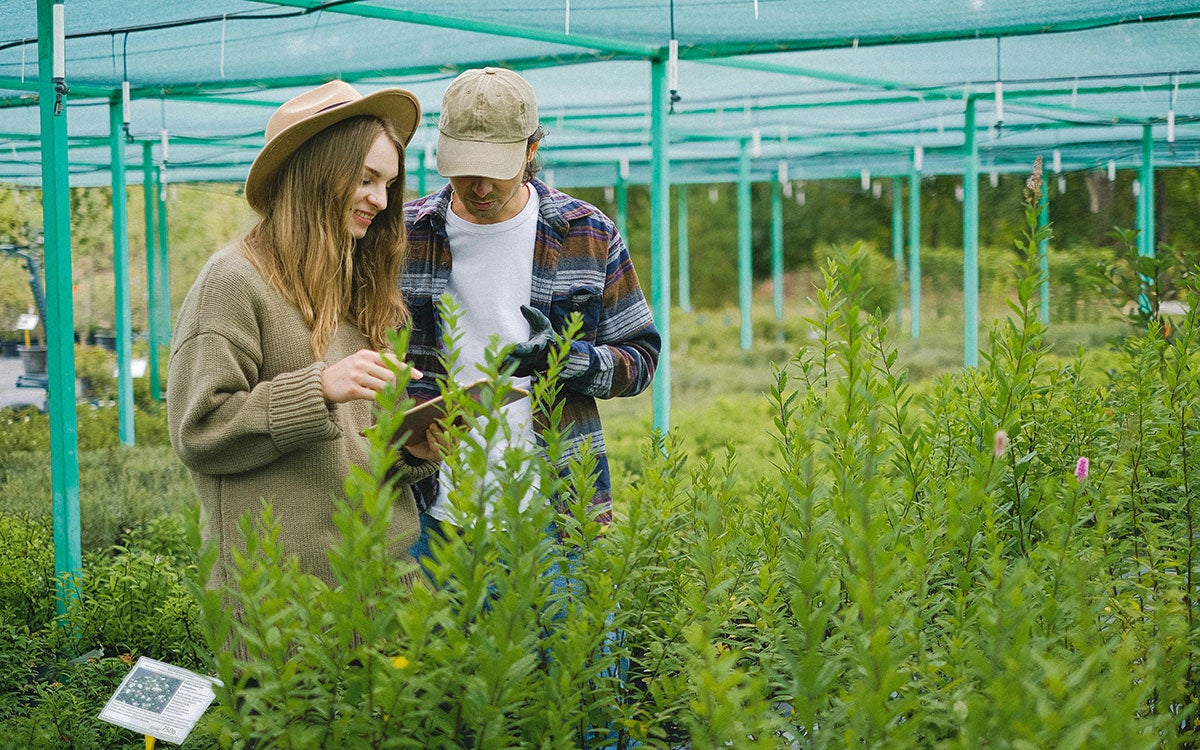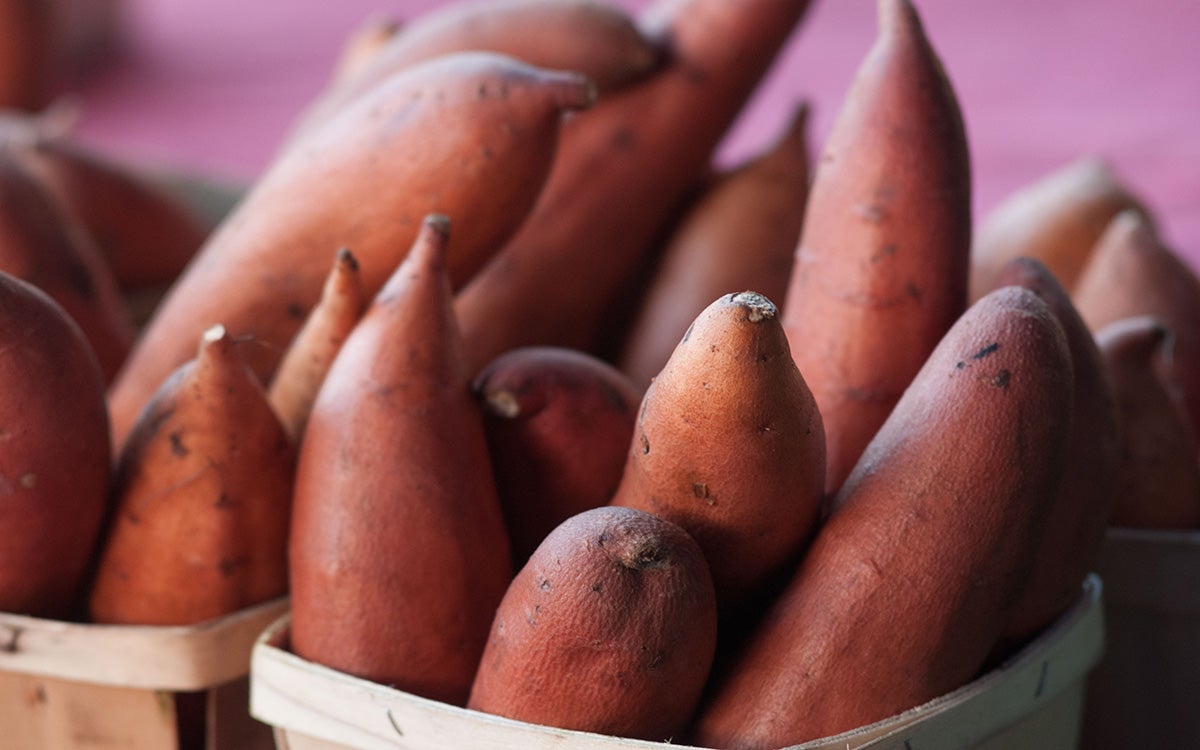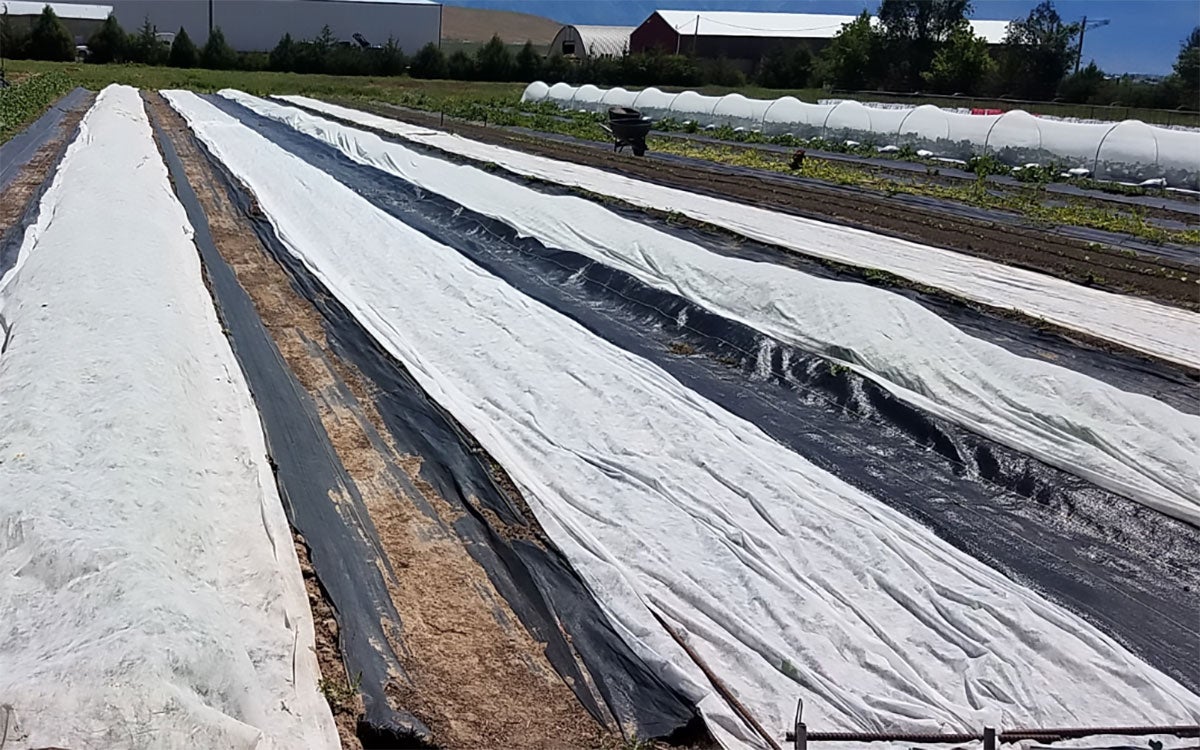Written by Rhoda Burrows, former Professor & SDSU Extension Horticulture Specialist.
Description

General Description: Snap beans, also called “green beans” or “string beans” (although most modern varieties do not have strings) are harvested when the pods contain immature seeds, and the pods are still succulent.
Types: Snap beans can have green, purple or yellow (wax beans) pods, and can include both the rounded and the flat-types (romano).
Growth Habits: Bean growth habits include bush beans, pole beans, and half-runners (shorter than pole beans). Pole beans are twining vines growing up to six feet and sometimes taller that must be supported. Pole beans flower continuously, producing new pods all through the season, while bush beans tend to produce all their pods within one to three weeks.
Fun Fact: Records of growing and eating beans have been found in Egyptian tombs and in the Old Testament.
Planting

Sowing: Plant the seed directly into the garden once the danger of frost is past and the soil is thoroughly warm. Choose a site within the garden that did not have beans growing in it the previous year. Plant about 1-inch deep and 2-to-4 inches apart within the row for bush beans. In drier areas of the state, they may be planted in double-rows with the rows 6 inches apart. Pole beans should be planted 4-to-6 inches apart (or 4-to-6 seed in hills spaced 3 feet apart) and should be provided with a trellis for the plant to grow onto. If you have not grown beans for the past few years, using a Rhizobium inoculant on the seed can increase yield.
Timeline: Plant beans after the chance of frost has passed (Figure 2). Days to harvest range from 50 to 70 days.
Plant Care
Trellising: Pole bean supports should be put in place at planting time. Make a simple trellis of six-foot stakes and twine, or set up a teepee of bamboo poles or long branches. Plant seeds in a row in front of the trellis, or in a circle around a teepee trellis.
Watering: Keep the soil moist but not soggy; allow the soil surface to dry up to a half-inch deep between waterings. On average beans will require about 1 inch of water per week. Be sure that beans are kept moist during and after bloom, to get the best yield and well-shaped pods.
Mulching: Mulching can help keep the soil evenly moist, as well as decrease weeds.
Weeding: Frequent, shallow cultivation will kill weeds before they become a problem. Beans have shallow roots, so do not hoe deeply.
Fertilizing: Beans are a legume, and do not need extra nitrogen fertilizer.
Pests and Diseases

Major Pests
- Cutworms: Cutworms chew stems at the soil line, leaving the severed tops uneaten.
- Bean Leaf Beetles: Bean leaf beetles feed on leaves, especially young tender ones (Figure 3-A). Feeding on seedlings is especially damaging and can kill plants. For more information, view Watch for Bean Leaf Beetles.
Major Diseases
- Root-Rotting Pathogens: The plants begin to brown and die from the soil up, and eventually collapse.
- Leaf Spot Diseases: Anthracnose, rust and bacterial lead spot diseases (Figure 3-B). More common in plantings with poor air circulation or overly dense rows. Not planting beans in the same spot from year to year can help reduce these diseases.
Minor Diseases
- Powdery Mildew and Downy Mildew: Disease common in hot weather. Leaves and pods can become covered in a whitish mold.
- Viruses: Viruses spread from one plant to another by insects. They can cause unusual coloring and strangely puckered leaves.
Harvest
Harvest: Snap beans can be picked at any stage of pod formation until the shape of the individual seeds inside becomes apparent, causing the pods to bulge. After this stage, the pods are typically less juicy and more fibrous. However, the pods can be picked at this more advanced stage and shelled to use the soft fresh bean seeds. Pick beans after the dew is off the plants, and they are thoroughly dry. Picking beans from wet plants can spread bean bacterial blight, a disease that seriously damages the plants. Be careful not to break the stems or branches, which are brittle on most bean varieties. After the last harvest, remove all plants from the garden, to decrease future disease problems.
Average Yield: 3 to 4 pounds per 10-foot row.
Storage and Preparation
Storage: Store beans in a relatively cool and humid place, ideally with temperatures around 45°F. They can tolerate a few days in the refrigerator, but then will develop watersoaked spots or browning.
Cooking Tips: Green beans are delicious when lightly blanched (cooked just long enough for them to darken their color). For more details see our Pick it! Try it! Like it! resource for green beans.
Nutrition Facts: High in protein, low in calories, high in fiber, low in fat and high in Vitamin B.


